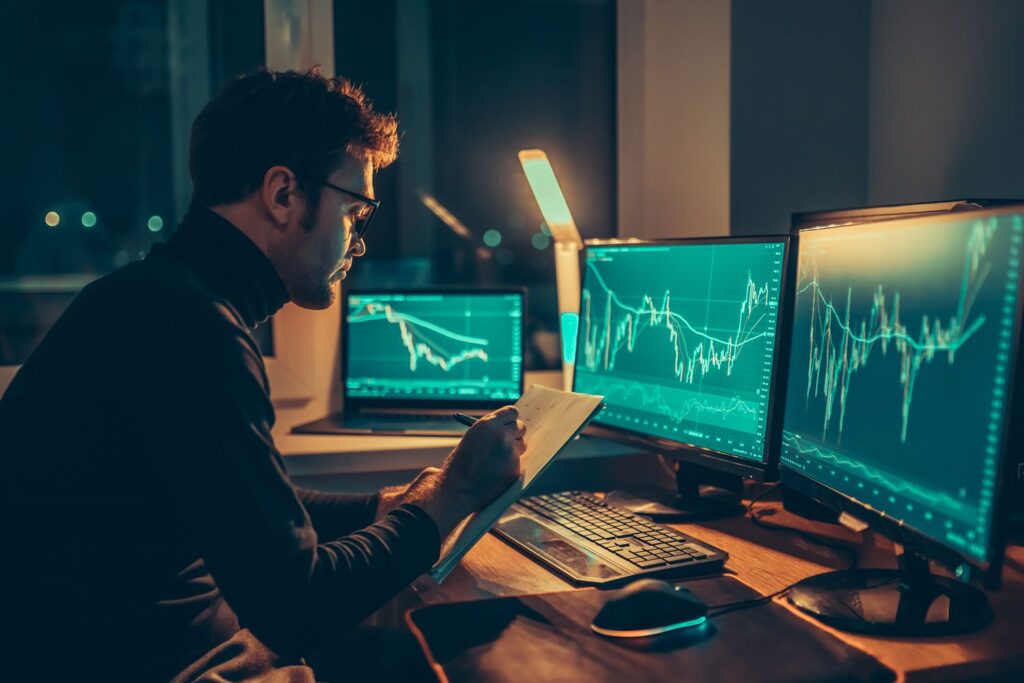As it was once mostly illegal, forecasting or event contracts in forecast markets have been inched into the regulated mainstream. Interactive Brokers (IBKR), one of the world’s largest electronic brokerage companies, currently offers dozens of markets directly from ForeCastex to trader workstations, providing nearly 24 hours of access. Meanwhile, the 2025 decision by the Commodity Futures Trading Commission (CFTC) shows a setback by regulators by dropping appeals against forecast market political contracts.
Against the backdrop, retail investors are asking whether forecasting contracts will become an added tool to their portfolio or are more than another way of legally gambling.
Key takeout
Prediction contracts convert real-world questions into binary, $1 set bets. The pitfalls of liquidity, tax treatment, and behavior can erode the theoretical advantages these markets promise.
How forecast contracts work
A forecasting contract works like a financial bet slip for a real event. Each contract asks for a simple yes-or-no question. “Will inflation reach 4% by the end of the year?” or “Will it rain in Miami on Super Bowl Sunday?” – create two tradable contracts on the outcome. Instead of fixed odds, these contracts are exchanged like mini stocks. If the trader thinks there is a chance of 38% rain, the cost of a “yes” contract is 38¢. If you buy it at that price, you’ll pocket 62¢ if it rains (63% return on investment). If the sky remains clear, you will lose 38¢ stakes.
Courtesy of Karshi.
Because these contracts are traded on an exchange, positions can be closed early by selling to another participant, allowing hedgers and speculators to lock themselves into profits (or reduce losses) before final resolution of the forecast. This means you don’t have to wait for the weather forecast to cash out. These contracts trade on exchanges, so you can sell your position at any time before the event occurs. Perhaps new weather data will hit 55% of the chances of rain.
Many venues, including IBKR’s Forecastex, Polymarket and Kalshi, offer small dollar caps ranging from $20 to $25 per contract to keep retail clients manageable.
For now, regulators have categorized forecast contracts, such as traditional derivatives, and are exposing them to operational prevention and location restrictions rules.
Tip
A forecasting agreement may allow holders to pay competitive incentive coupons and may encourage them to remain positioned open until a settlement.
The tide of restrictions is turning, but it is still choppy
For many years, US regulators have treated widespread political or economic contracts with suspicion, equating them with off-track bets and more. However, that stance changed in September 2023, when a federal judge ruled that the CFTC was over-restrained by refusing the CFTC to list political forecast contracts. The agency appealed, but later changed courses in May 2025 and voted unanimously to dismiss the case. Note that observers do not create blanket safe harbors, but remove the big hurdles that cloud new lists.
Interactive brokers, among other things, had consolidated almost 250 markets from GDP in the next quarter to hurricane landings, even predicting that they would eat up stock trading volumes within 15 years.
Still, Congress has raised legislation to ban elections entirely, and individual states retain the power to block access.
Is forecast contracts just a gamble?
The forecast contract is at the intersection of hedging and speculation. Farmers may buy “yes” with “CPI over 4% in Q4”. While offsetting the input costs of inflation, bond desks can shorten “yes” (or “no” by hiking fed” as a cheaper alternative to the Eurodoraru option.
Academic studies show crowd predictions tend to outperform expert research, but this edge is narrower when transaction fees, taxes and bid spreads are taken into account. If the spread is between 3¢ to 5¢, when the price rises to nearly 50 cents, you eat almost 10% of your expected value. The fluidity is also uneven. Famous elections trade deeply, but esoteric climate indicators can remain inactive for several days, making the exit more expensive.
Finally, binary structures lead to cognitive traps. Emphasise a compelling story, chase losses, or get the wrong odds for coin flip percentages. Regulators have explicitly warned that while dollar losses are kept at the upper limit, traders could snowball if the pyramids were correlated to pyramids.
important
The predicted contract price does not always reflect actual probability. This can lead to unexpected losses.
Conclusion
A forecasting contract can be a light-hearted way to test non-financial outcomes, singular risks of hedging, or simply probabilistic temperament, without being bound by a large amount of capital. But they are not a free lunch. Too few traders for a particular contract, wide spread, shift regulations, and behavioral bias can all erode appeal, turning what appears to be a precision tool into potential high stakes gambling.
